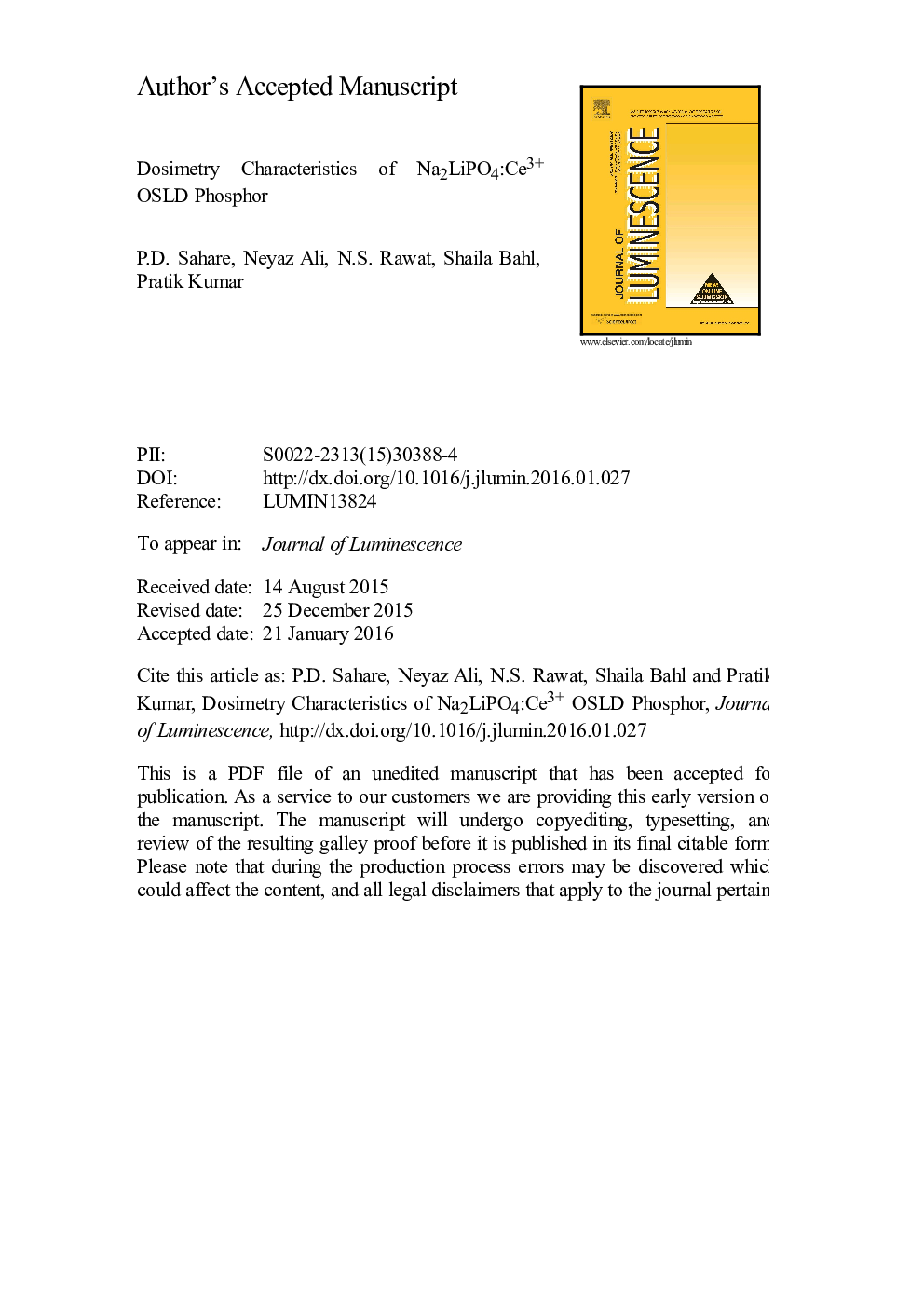| Article ID | Journal | Published Year | Pages | File Type |
|---|---|---|---|---|
| 5398482 | Journal of Luminescence | 2016 | 26 Pages |
Abstract
High Sensitivity NaLi2PO4:Ce3+ optically stimulated luminescence dosimetry (OSLD) phosphor material was prepared by a simple solid state diffusion method. The material was characterized by XRD to confirm its formation in a single phase. Comparison of the experimental data with that of the data available in the literature (JCPDF # 80-2110) shows formation of a single orthorhombic phase, with the space group Pmnb (62). Study on the particle size effect shows that particle size in the range 50-150 μm is more suitable for the continuous wave-optically stimulated luminescence (CW-OSL) dosimetry. Dosimetric properties of the phosphor material (particle size 50-150 μm) using CW-OSL technique for blue light stimulation (λâ470 nm) show that it is highly sensitive (~6 times more sensitive than the commercially available Al2O3:C phosphor) in the linear dose range. The phosphor has found to have all the other good dosimetric characteristics, such as, easy method of synthesis, tissue equivalence, i.e., low-Z material (Zeff. ~10.8), low fading (~ 25% in 20 days), wide range of dose response (3 mGy-500 Gy), easy optical bleaching for its reuse, excellent reusability, etc., which make it useful for OSL dosimetry of high-energy radiations. Another advantage of this OSLD phosphor is that its dosimetric TL glow peak does not fade much on taking OSL and thus it could also be used as TLD phosphor for re-estimating doses in case of any doubts.
Keywords
Related Topics
Physical Sciences and Engineering
Chemistry
Physical and Theoretical Chemistry
Authors
P.D. Sahare, Neyaz Ali, N.S. Rawat, Shaila Bahl, Pratik Kumar,
